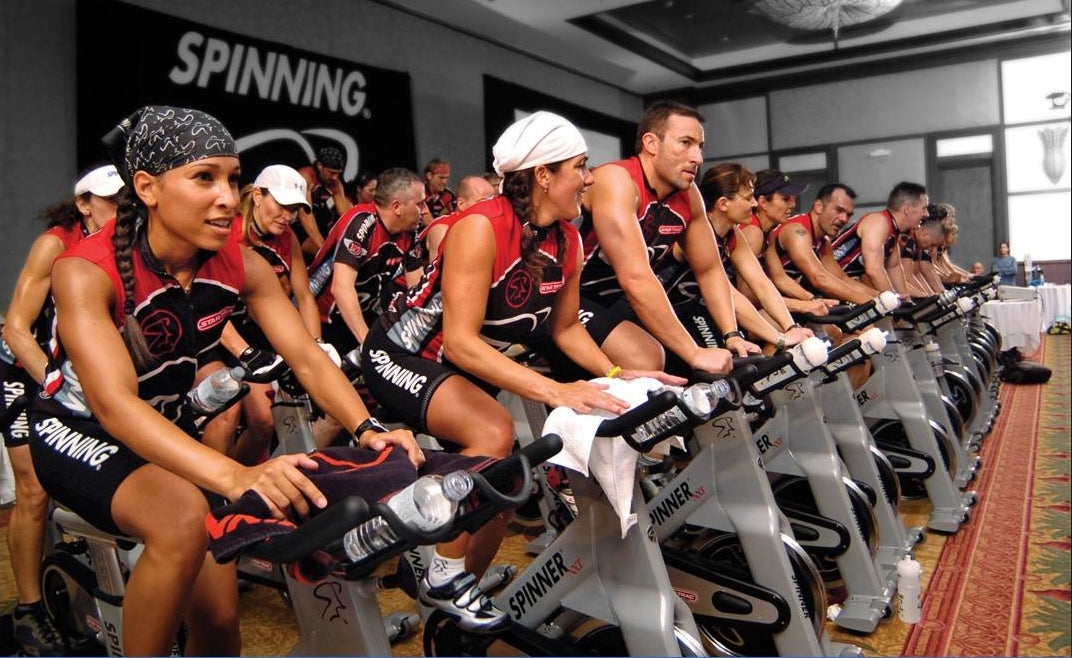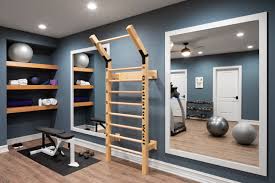Let's play something different this summer——Stand Up Paddle. When it comes to paddleboards, some friends may confuse them with surfboards. Although the paddleboards are similar to surfboards, the paddleboards are not surfboards!
The ease of maneuverability of the paddleboard and the diversity of its gameplay have made this water sport popular all over the world. It is a healthy aerobic experience, a sport suitable for all ages, and a water sport suitable for beginners.

What is a SUP?
Stand Up Paddle (SUP) is also known as stand-up paddleboarding. At first, the surf instructor managed many students, because standing upright on the surfboard can get a better view, which is convenient for observing the surrounding situation, and it is also conducive to the swells coming from a distance.
SUP Origin
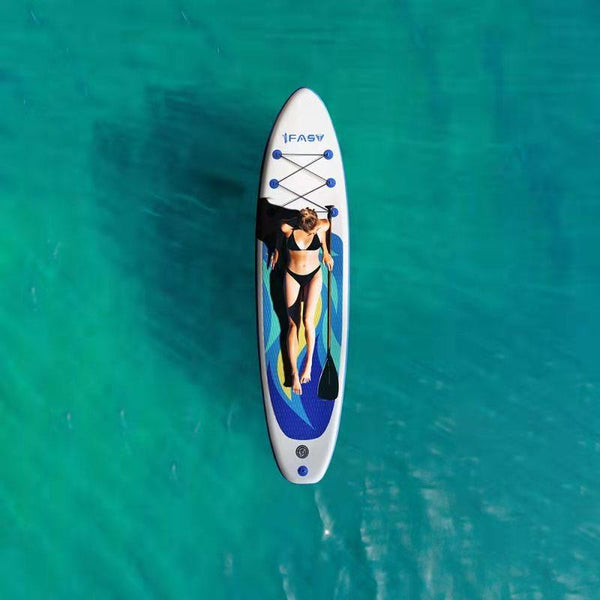
The sport of paddleboard originated from paddleboard surfing in Hawaii, the USA in the 1960s. In recent years, it has gradually become popular all over the world. SUP paddleboard has become one of the most popular water sports nowadays. Its full name is Stand Up Paddle or SUP for short, so paddleboard players are SUPER!
Because it is simple and easy to play, with various playing methods, lying down, lying down, kneeling, sitting, standing, jumping into the water at any time to swim, paddle boards have gradually become popular in China in recent years;
It is precise because of its high participation and low threshold that even novice players can get started immediately, and the people participating in paddle boarding can be from children to the elderly, and even your pet dog at home can also play together.
The paddleboard is wider and thicker, so it has more buoyancy, making it easier for players to grasp the balance, and it is also equipped with paddles, so you can experience the fun of paddling on various water surfaces.
It is also a pleasure to ask friends to bathe in the sun, enjoy nature, and at the same time get full-body exercise.
The volume and weight of the paddleboard
The paddleboard should be selected according to your body size.
If the displacement of the board does not match your weight, your board will not be able to drag you out of the water.
The volume and load capacity of the board are two very important reference factors when choosing a paddleboard.
Volume:
The volume of the board can be expressed in liters. The buoyancy generated by the volume of the board makes the board capable of carrying heavy objects. The larger the volume of the board, the greater the weight it can carry.
A shortboard can have good buoyancy if it is wide and thick. Similarly, if the longboard is narrow and thin, the buoyancy will not work. So, if a 200-pound surfer wants to surf, he can choose a shortboard with good operability but a relatively large volume (wide and thick).
Loading capacity:
Each board has a certain load capacity. Knowing the load capacity of the board is very important. If your weight is too heavy for your board, your board will have a very deep draft and it is not easy to water ski.
Paddleboard equipment
A set of paddleboard sports equipment is divided into:
A set of paddleboard sports equipment is divided into:
Paddleboard: The paddleboard is divided into ALL-ROUND, SURF, TOURING, RACING, YOGA, Inflatable, you can choose according to your needs
Caudal fin: Caudal fin can increase water control ability and stability
Sheath: The paddle of the water ski usually has a sheath in the center of the pole to increase its strength.
Paddle rod: It is appropriate to choose paddles that are 15-20CM higher than the user
Foot rope: The footrope can connect you to the paddleboard so that you can get on the board quickly when falling into the water. At the same time, the buoyancy of the paddleboard is to ensure the safety of players
Life jacket: Check whether all functions are complete before launching, avoid slack, safety first
Board Type
When choosing a paddleboard, you must consider: where to go, leisure or racing, novice or veteran.
The experience of different types of paddleboards is also different. As the saying goes, if you want to do well, you must first sharpen your tools.
Shortboard (below 2.8 meters)

Suitable for surfing. Compared with the longer board, the shorter board has better maneuverability. Generally, children’s surfboards are below 2.4 meters.
Medium board (2.8 meters -3.7 meters)
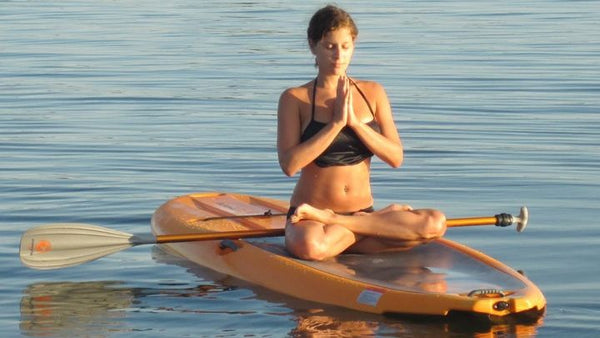
It is the ideal size for multi-function boards. You can glide in the lake or simply surf in the sea.
Longboard (3.8m-4.3m)
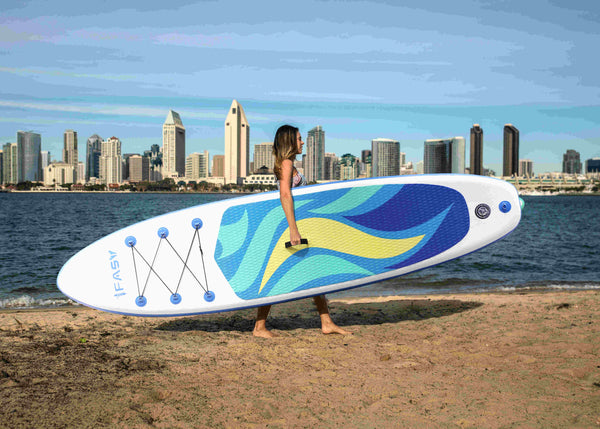
Suitable for competitions and water excursions. The speed of the longboard is faster than that of the short and medium board, and it is easier to slide straight. If you are interested in participating in competitions or hiking, you need a longboard to race or glide long distances to reach your camp.
Wide board (80cm or wider)
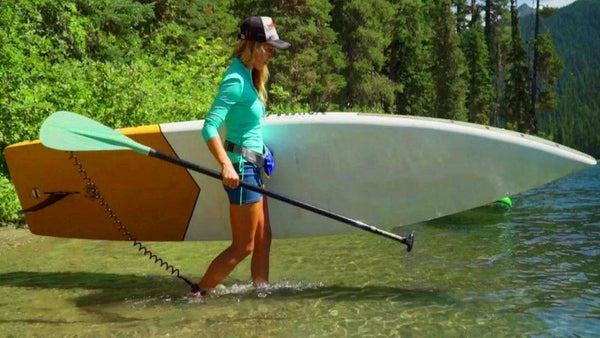
The wide board is more stable than the narrow board, and it is easier to stand. But the speed will be slower than the narrow board.
Narrow board (74cm-76cm)

The speed of the narrow board is faster than that of the longboard, but the stability will be worse.
How to play
Standing skills

If you are playing for the first time, it is best to choose calm water, no boats and floating objects around.
In the beginning, you will feel that it is easier to kneel on the board than to stand up.
1: The board is placed in shallow water, standing next to the board, the paddle is leaning on the side of the board like a bracket paddle, and the paddle leaf is inserted into the water.
2: Two hands hold the middle part of the edge of the board, and one hand always holds the oar.
3: Kneel on the middle and back of the board, and then put the paddle flat on the paddleboard.
4: Kneel and feel the balance of the board. So that the head of the board will not tilt-up, and the tail will not sink into the water.
5: Hold one side of the board firmly with your hand to stabilize it.
6: When you feel ready, stand up with one foot first, then stand up. The standing position is where you are kneeling. Of course, you can also bring a friend to help you hold the board and make you stand up.
Paddling technique
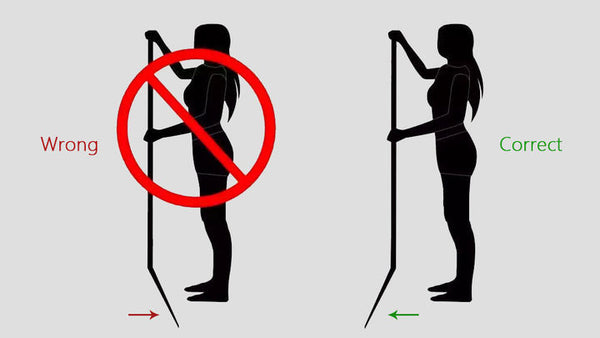
1: When you are sliding on the right, your right hand holds the lower part of the oar and your left-hand holds the upper part of the oar.
2: The camber of the propeller head is facing away from you. At first, your vision may feel unreasonable.
3: Keep your arms straight and use your body to paddle.
4: When paddling, push down with the upper hand.
5: First insert the paddle into the water, and then pull it down to the ankle to get out of the water.
6: You can take it slowly at the beginning, it is not necessary to use a lot of effort at the beginning.
7: At the beginning of the paddling, use a small supporting force to paddle, which will make your strokes more effective and farther.
8: If you want to maintain a straight line, take turns to draw on both sides, changing one side every 4-5 times.
9: Don't forget to change the up and down positions of your hands when changing sides and paddling.
Paddle board stroke
Stand and row
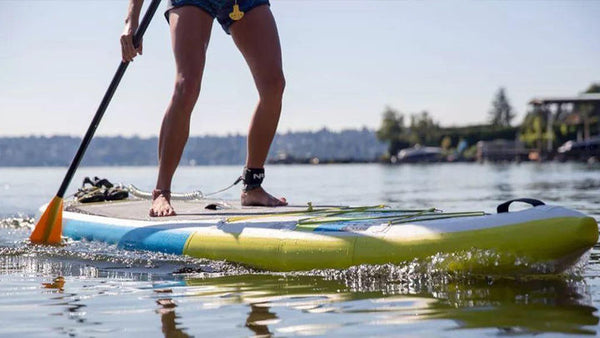
1: Keep your feet as balanced as possible, shoulder-width apart, and stand in the middle of the paddle board.
2: Keep your feet forward, your knees bent, and your back straight.
3: Use your hips to maintain balance, not your upper body.
4: Keep your head and shoulders straight and stable, and use your hips to adjust your body position.
5: Look ahead, don't just stare at your feet.
Sitting and rowing
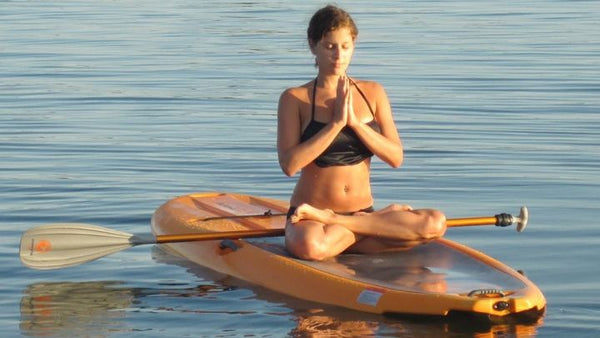
1: Newcomer's posture, master the best balance, and play with the nearby fish.
2: Straighten your feet to ensure the smoothness of the stroke.
3: Sitting and rowing is relatively easy, just keep the center of gravity in the middle of the paddle board.
Kneeling and sliding
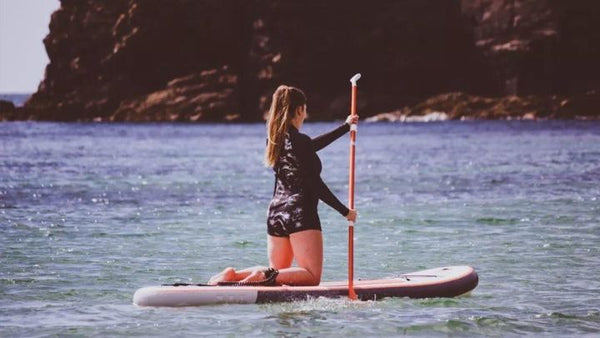
1: Master the balance, maximize the use of core strength, speed and passion!
2: Kneel on the board with both knees, adjust your position as needed, until you feel the board is stable enough.
3: Keep your head and shoulders straight and stable, and use your legs to adjust your body position.
Paddling on your stomach
1: Life does not need oars, it relies on both hands to wave, human and board as one, fast forward
2: Put your body on the middle of the paddle board, start paddling with both hands, and start your performance
Lie down and relax

1: There is no most leisure, only more leisure
2: Come to the "Ge You Lie" paddle board, the whole sky is in front of your eyes.
After you have mastered your balance, you can start to enjoy the fun of water skiing.

